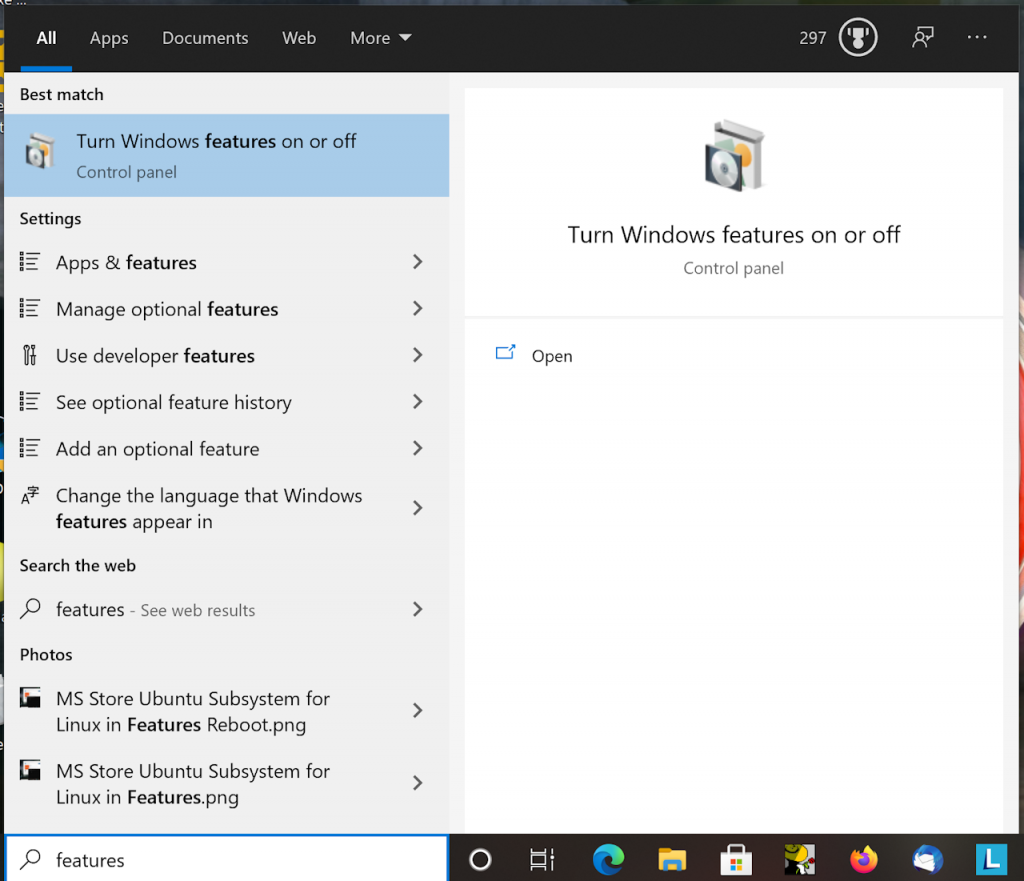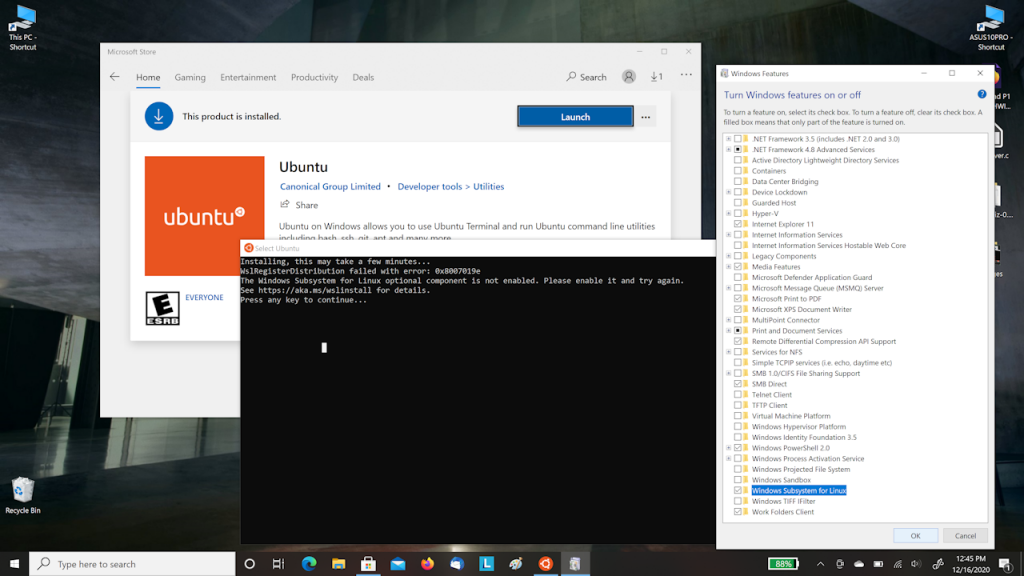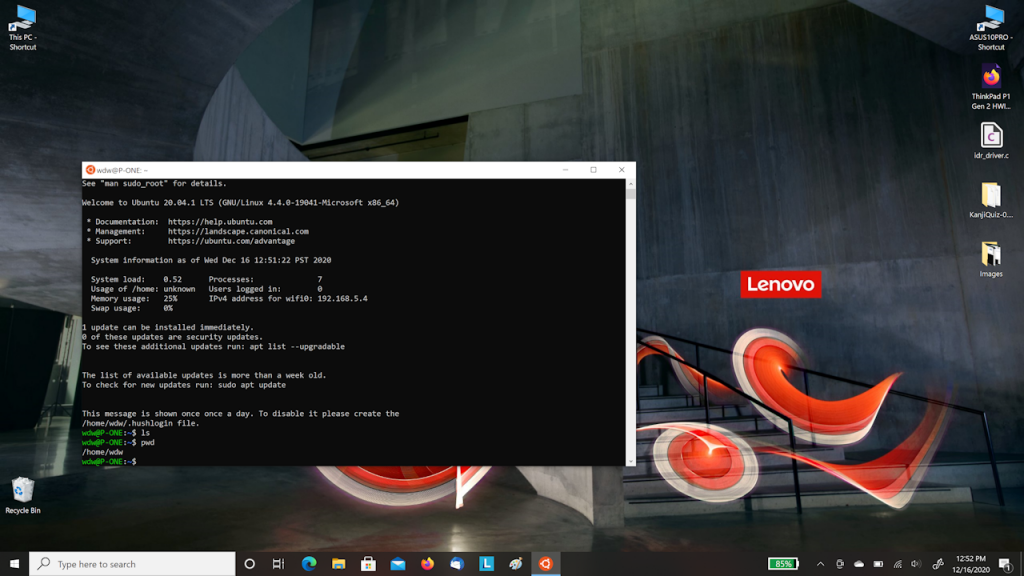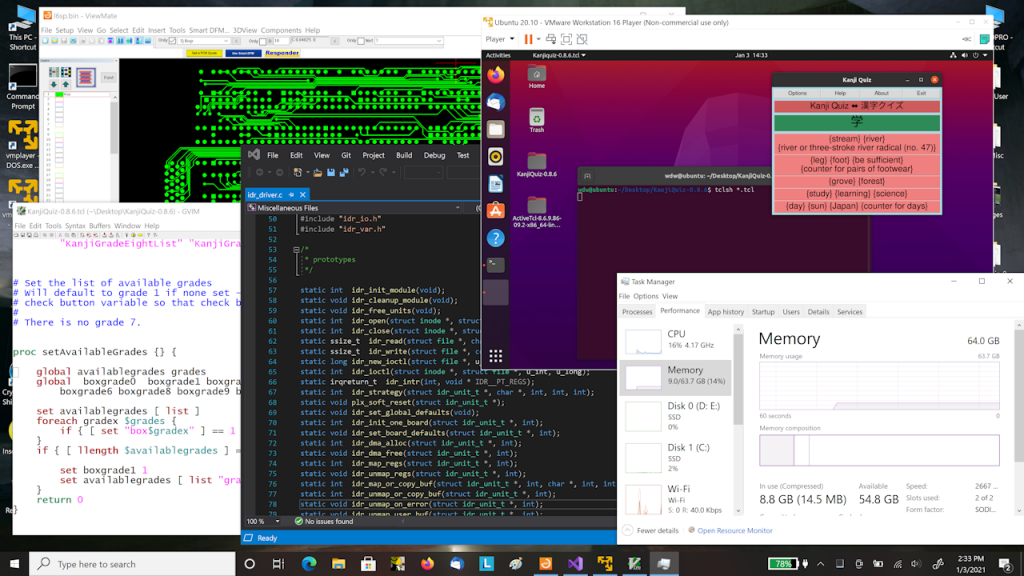Applications
Software I tend to install on any new Windows machine – mostly out of habit. Many of these were things I’d have used before retiring a few years ago. In no particular order:
- ESET Internet Security (full-featured security suite)
- Firefox (browser – profile copied from primary PC)
- Thunderbird (email client – profile copied from primary PC)
- MS Office 365 (family license donated by my son, otherwise… no)
- LibreOffice
- WordPerfect Office Suite
- PaintShop Pro
- MS Visual Studio (for the editor and C compiler)
- Vim (my favorite code editor)
- ActiveTCL Community Version (tcl/tk support – free)
- 7zip (archiving/unarchiving tool, used constantly to extract image contents)
- Filezilla ( ftp access to my website – some versions may contain unwanted “additions” use care when downloading and installing)
- Ubuntu on Windows * (Linux environment for Windows 10)
- VMWare Workstation Player (virtual machine host – free version)
- Crystal DiskMark (SSD performance gauge – the stand-alone version, not installed)
- iTunes (music copied from my primary PC)
- Forte Agent (newsreader – profile copied from primary PC)
- Nero Platinum Suite (media creation, recoding…)
- VLC (video player)
- MakeMKV (media content extraction)
- Handbrake (media conversion/recoding)
- Acrobat Reader DC (PDF reader)
- ViewMate (gerber circuit board design file reader – free)
* Ubuntu on Windows requires the Windows Subsystem for Linux. It can be enabled in Windows Features -> Turn Windows features on or off. Type “features” in the Windows task bar search box.
And we’re in 🙂
Running a few of those apps: ViewMate looking at design files for one of my circuit boards, Visual Studio & the Linux driver for that board, Vim editing tcl/tk code for my Kanji Quiz Japanese study aid program, Ubuntu VM with Kanji Quiz running. The P1 isn’t even breaking a light sweat 🙂




